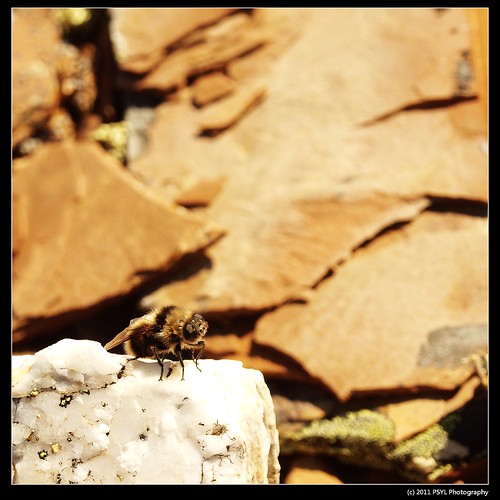
A deer bot fly Cephenemyia sp. (family Oestridae).
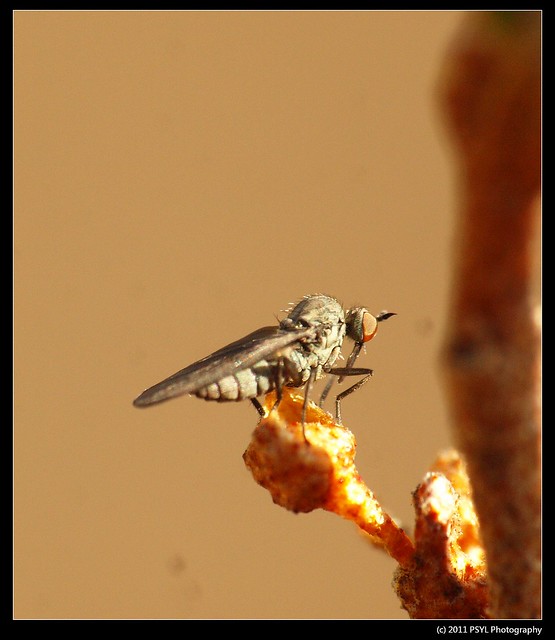
This is a dance fly (family Empididae). This (and Hybotidae) and Asilidae (Robber flies) are pretty common predatory flies in the place I was at.

This is one of those flies that you can't identify from this position, unless you have the specimen in hand. It is probably a female (because the eyes don't meet at the top of the head) and perhaps a Muscoid fly (based on personal experience).
This next group of flies belongs in the family Syrphidae, i.e. flower flies, because they visit flowers, and many are incredible bee mimics.
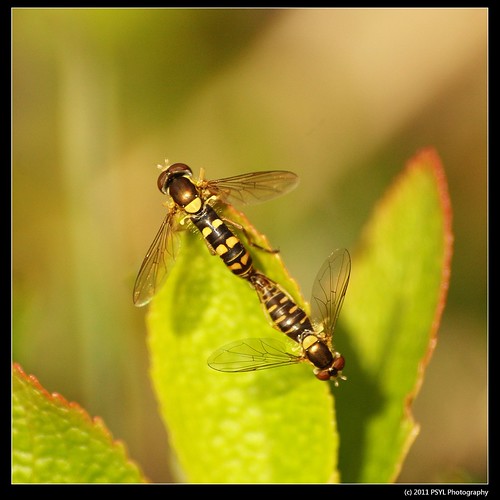
Mating pair. The one on top is the male (eyes meet at the top of the head), and they look like Sphaerophoria sp. to me. Sphaerophoria sp. is a difficult genus to identify to species unless you catch the male and dissect its genitalia.
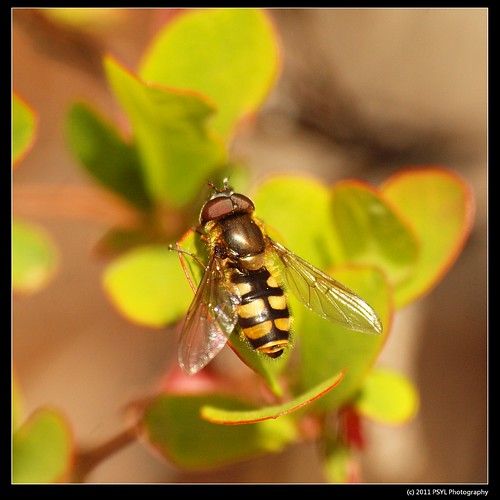
Without the specimen in hand and go through the keys, it is still difficult to identify Syrphids simply by looking at it. Perhaps an Eupeodes sp.?
 Another Eupeodes sp.?
Another Eupeodes sp.?Here are the features to identify Eupeodes sp. (the following information are copied from resources in the CANPOLIN identification course. Please contact one of the instructors, Dr. Jeff Skevington, if you wish to use this resource):
- flies with pale markings at least on one abdominal tergite
- black abdomen with partial or complete transverse yellow bands; vein R4+5 sinuous in a few taxa
- Postpronotum bare
- Abdominal tergite with no black velvet bands, only black and yellow/white patterns
- face mostly yellow
- face mostly yellow or with complete middle black stripe; eye with rounded emargination on posterior margin
- R4+5 vein conspicuously curved
- vein R4+5 curving into cell r2+3
- eye bare; abdomen black with yellow, broad, curved bands on tergites 3 and 4 that sometimes touch; wings densely microtrichose at least on apical 1/3
- flies with pale markings at least on one abdominal tergite
- black abdomen with partial or complete transverse yellow bands; vein R4+5 sinuous in a few taxa
- Postpronotum bare
- Abdominal tergite with no black velvet bands, only black and yellow/white patterns
- face mostly yellow
- face mostly yellow or with complete middle black stripe; eye with rounded emargination on posterior margin
- R4+5 vein conspicuously curved
- vein R4+5 curving into cell r2+3
- eye bare; abdomen black with yellow, broad, curved bands on tergites 3 and 4 that sometimes touch; wings densely microtrichose at least on apical 1/3
Here is a male Sphaerophoria sp. (the name comes from Greek word sphaero - a ball or sphere, and phoria - bearing) on the male soapberry plant. Fascinating.
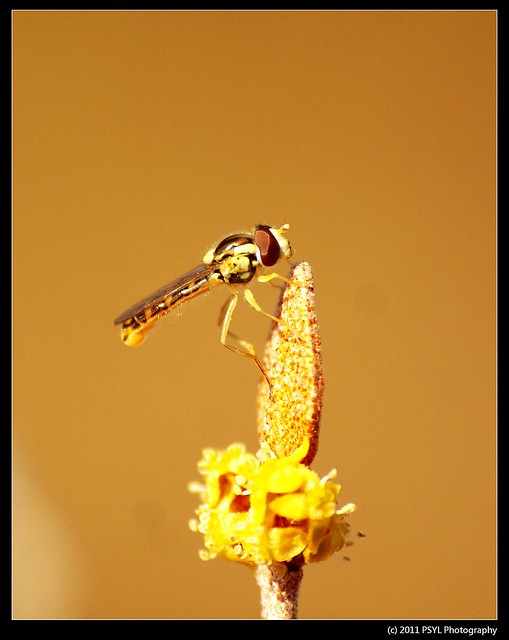
BugGuide link
References:
Elberling, H. and Olesen, J.M. 1999. The structure of a high latitude plant-flower visitor system: the dominance of flies. Ecography. 22(3): 314-323.
Kevan, P. 1972. Insect pollination of high arctic flowers. Journal of Ecology. 60(3): 831-847.

No comments:
Post a Comment